Ancient History Old Ncert Chapter (1-29) Notes contains – Pages = 92 Pages, Format = Pdf, For Year = 2024. Buy All in One combo and Get More Discount & Benefits = Click Here
|| Content of Ancient History Old Ncert Notes ||
- Chapter:-1 – The Importance of Ancient Indian History
- Chapter:-2 – Modern Historians of Ancient India
- Chapter:-3 – Types of Sources and Historical Construction
- Chapter:-4 – The Geographical Setting
- Chapter: 5 – The Stone Age: The Early Man
- Chapter: 6 – Chalcolithic Farming Cultures
- Chapter: 7 – The Harappan Culture: Bronze Age Civilization
- Chapter: 8 – Advent of the Aryan and the Age of the Rig Veda
- Chapter: 9 – The Later Vedic Phase
- Chapter: 10 – Jainism and Buddhism
- Chapter: 11 – Territorial States and the First Magadhan Empire
- Chapter: 12 – Iranian and Macedonian Invasions
- Chapter: 13 – State and Varna Society in the Age of the Buddha
- Chapter: 14 – The Age of the Maurya Age
- Chapter: 15 – Significance of the Maurya Rule
- Chapter: 16 – Central Asian Contact and Their Result
- Chapter: 17 – The Age of Satavahanas
- Chapter: 18 – The Dawn Of History in the Deep South
- Chapter: 19 – Crafts, Trade and Towns in the Post-Maurya Age
- Chapter: 20 – The Rise and Growth of the Gupta Empire
- Chapter: 21 – Life in the Gupta Age
- Chapter: 22 – Spread of Civilization in Eastern India
- Chapter: 23 – Harsha and his Times
- Chapter: 24 – Formation of New States & Rural Expansion in Peninsula
- Chapter: 25 – Developments in Philosophy
- Chapter: 26 – India’s Cultural Contacts with the Asian Countries
- Chapter: 27 – Transformation of the Ancient Phase
- Chapter: 28 – Sequence of Social Changes
- Chapter: 29 – Legacy in Science and Civilization
|| Brief Introduction of Ancient History Old Ncert Notes ||
Chapter: 1 – The Importance of Ancient Indian History
- Unity In Diversity
- The Relevance of the Past to The Present
Chapter: 2 – Modern Historians of Ancient India
- Colonialist Views and their Contribution
- Nationalist Approach and its Contribution
Chapter: 3 – Types of Sources and Historical Construction
- Material Remains
- Coins
- Inscriptions
- Literary Sources
- Foreign Accounts
- Historical Sense
- Constructing History
Chapter: 4 – The Geographical Setting
- Emergence of India
- The Role of the Monsoon
- The Northern Boundaries
- Rivers
- Natural Frontiers and Cultural Contacts
- Minerals and Other Resources
Chapter: 5 – The Stone Age: The Early Man
- The Palaeolithic Period: Hunters and Food Gatherers
- Phases in the Palaeolithic Age
- The Mesolithic Age: Hunters and Herders
- Prehistoric Art
- The Neolithic Age: Food Producers
Chapter: 6 – Chalcolithic Farming Cultures
- Chalcolithic Settlements
- Importance of the Chalcolithic Phase
- Limitations of Chalcolithic Cultures
- The Copper Hoards and the Ochre-Coloured Pottery Phase-
Chapter: 7 – The Harappan Culture: Bronze Age Civilization
- Geographical Extent
- Town Planning and Structures
- Agriculture (Upscsummarynotes.Com)
- Domestication of Animals
- Technology and Crafts
- Trade and Commerce
- Social Organization
- Political Organization
- Religious Practices
- The Male Deity in the Indus Valley
- Tree and Animal Worship
- The Harappan Script
- Weights and Measures
- Harappan Pottery
- Seals and Sealings
- Images
- Terracotta Figurines
- Origin, Maturity and End
- Post-Urban Phase
- Percolation of New Peoples
- Problem of Origin
- Was The Harappan Culture Vedic?
- Problem of Continuity
Chapter: 8 – Advent of the Aryan and the Age of the Rig Veda
- Original Home and Identity
- Tribal Conflicts
- Cattle Rearing and Agriculture
- Tribal Polity
- Tribe and Family
- Social Differentiation
- Rig Vedic Gods
Chapter: 9 – The Later Vedic Phase: Transition to State and Social Orders
- Expansion in the Later Vedic Period (C. 1000–500 BC)
- The PGW Iron Phase Culture and Later Vedic Economy
- Political Organization
- Social Organization
- Gods, Rituals and Philosophy
Chapter: 10 – Jainism and Buddhism
- Causes of Origin
- Vardhamana Mahavira and Jainism
- Doctrines of Jainism
- Spread of Jainism
- Contribution of Jainism
- Gautama Buddha and Buddhism
- Doctrines of Buddhism
- Features of Buddhism and the Causes of Its Spread
- Causes of the Decline of Buddhism
- Importance and Influence of Buddhism
Chapter: 11 – Territorial States and the First Magadhan Empire
- The Mahajanapadas
- The Rise and Growth of the Magadhan Empire
- Causes of Magadha’s Success
Chapter: 12 – Iranian and Macedonian Invasions
- Iranian Invasion
- Results of the Contact
- Alexander’s Invasion
- Effects of Alexander’s Invasion
Chapter: 13 – State and Varna Society in the Age of the Buddha
- Material Life
- Rural Economy
- Administrative System
- Army and Taxation
- The Republican Experiment
- Social Orders and Legislation
- Conclusion
Chapter: 14 – The Age of the Maurya Age
- Chandragupta Maurya
- Imperial Organization
- Ashoka (273-32 BC)
- Ashokan Inscriptions
- Impact of the Kalinga War
- Internal Policy and Buddhism
- Ashoka’s Place in History
Chapter: 15 – Significance of the Maurya Rule
- State Control
- Economic Regulations
- Art and Architecture
- Spread of Material Culture and the State System
- Causes of the fall of The Maurya Empire
Chapter: 16 – Central Asian Contact and Their Result
- The Indo-Greeks
- The Shakas
- The Parthians
- The Kushans
- Impact of Central Asian Contacts
Chapter: 17 – The Age of Satavahanas
- Political History
- Aspects of Material Culture
- Social Organization
- Pattern of Administration
- Religion
- Architecture
- Language
Chapter: 18 – The Dawn of History in the Deep South
- The Megalithic Background
- State Formation and the Development of Civilization
- Three Early Kingdoms
- The Purse and the Sword
- Rise of Social Classes
- Tamil Language and Sangam Literature
- Social Evolution from Sangam Texts
Chapter: 19 – Crafts, Trade and Towns in the Post-Maurya Age
- Crafts and Craftsmen
- Types of Merchants
- Trade Routes and Centres
- Goods in Foreign Trade
- Money Economy
- Urban Growth
Chapter: 20 – The Rise and Growth of the Gupta Empire
- Background
- Chandragupta I (Ad 319–34)
- Samudragupta (Ad 335–80)
- Chandragupta II (Ad 380–412)
- Fall of the Empire
Chapter: 21 – Life in the Gupta Age
- System of Administration
- Trends in Trade and the Agrarian Economy
- Social Developments
- The State of Buddhism
- The Origin and Growth of Bhagavatism
- Art
- Literature
- Science and Technology
Chapter: 22 – Spread of Civilization in Eastern India
- Signs of Civilization
- Orissa, And Eastern and Southern Mp
- Bengal
- Assam
- The Formative Phase
Chapter: 23 – Harsha and His Times
- Harsha’s Kingdom
- Administration
- Buddhism and Nalanda
Chapter: 24 – Formation of New States and Rural Expansion in the Peninsula
- The New Phase
- States of the Deccan and South India
- The Kalabhra Revolt
- The conflict between the Pallavas and the Chalukyas
- Temples
- Demands on The Peasantry
- Land Grants and Rural Expansion
- Social Structure and Brahmanization
Chapter: 25 – Developments in Philosophy
- Goal of Life
- Samkhya
- Yoga
- Nyaya
- Vaisheshika
- Mimamsa
- Vedanta
- Charvaka and the Materialistic View of Life
Chapter: 26 – India’s Cultural Contacts with the Asian Countries
- India’s Relations with the outside World
- Buddhism in Sri Lanka, Myanmar, China, and Central Asia
- Christianity and West Asian Relations
- Indian Culture in Southeast Asia
- Cultural Give And Take
Chapter: 27 – Transformation of the Ancient Phase
- Social Crisis and Agrarian Changes
- Rise of Landlords
- New Agrarian Economy
- The decline of Trade and Towns
- Changes in the Varna System
- Rise of Regional Identities
- Trends in Literature
- The Divine Hierarchy
- The Bhakti Cult
- Tantrism
Chapter: 28 – Sequence of Social Changes
- Tribal and Pastoral Phase
- Agriculture and the Origin of the Upper Orders
- The Varna System of Production and Government
- Social Crisis and the Rise of the Landed Classes
Chapter: 29 – Legacy in Science and Civilization
- Religion
- The Varna System
- Philosophical Systems
- Crafts and Technology
- Polity
- Science and Mathematics
- Medicine
- Geography
- Art and Literature
- Strength and Weakness
|| Brief Introduction of Ancient History Old Ncert R.S Sharma Notes ||
The “Ancient India” book by R.S. Sharma is a part of the NCERT (National Council of Educational Research and Training) series on history, commonly referred to as the “Old NCERT” series. This book is widely regarded as one of the most comprehensive and authoritative texts on ancient Indian history, particularly suited for students preparing for competitive exams like the UPSC Civil Services Examination in India.
R.S Sharma Old Ncert Pdf Book a distinguished historian, provides a detailed account of ancient Indian civilization, covering various aspects such as society, economy, polity, religion, art, and architecture. The book delves into the early civilizations of the Indian subcontinent, including the Indus Valley Civilization, Vedic Period, Mauryan Empire, Gupta Empire, and various other kingdoms and dynasties that shaped ancient Indian history.
One of the strengths of Sharma’s work lies in its balanced approach, combining archaeological evidence, literary sources, and scholarly interpretations to present a holistic understanding of ancient India. It also critically examines different historical interpretations and controversies, encouraging readers to engage critically with the subject matter.
Overall, R.S. Sharma’s Ancient History Old Ncert Pdf Book remains a seminal work in the field of ancient Indian history, appreciated for its depth of research, clarity of exposition, and analytical rigor.
|| T0 Buy Ncert Notes Combo Offer ||
- An Introduction to Indian Art Ncert Notes
- Ancient History Tamilnadu Board Notes
- Ancient India Old Ncert Notes
- Economy Ncert (9-12) Notes
- Geography Ncert Class (6-12) Notes
- Medieval History Tamilnadu Board Ncert Notes
- Medieval History Old Ncert Notes
- Modern History Old Ncert Notes
- Political Science Ncert Notes Class (6-12)
- Science Ncert Notes class (6-12)
- History Ncert Notes class (6-12)
- The Story of Civilization Ncert Notes by Arjun Dev
- Sociology Ncert Class (11-12) Notes
To Buy only Ncert Notes Combo – Click Here
|| T0 Buy All In One Combo Offer Notes ||
- For Year = 2024
- Formats = Pdfs
- Language = English
- Get extra 10% off, use code – Allinone10
- Ncert Notes = An Introduction to Indian Art | Ancient History Tamilnadu Board | Ancient India Old Ncert | Economy Ncert (9-12) | Geography Ncert Class (6-12) | Medieval History Tamilnadu Board | Medieval History Old Ncert | Modern History Old Ncert | Political Science Ncert Class (6-12) | Science Ncert class (6-12) | History Ncert class (6-12) | The Story of Civilization Ncert by Arjun Dev | Sociology Ncert class (11-12) |.
- Mains Notes = Art and Culture Nitin Singhania | GC Leong Latest Edition | Environment Shankar Ias | Ethics Lexicon | Indian Polity M.Laxmikanth | Indian Society Topic Wise |Internal Security Ashok Kumar IPS | Modern History Spectrum | Science and Tech Ravi P Agrahari | Indian Economy Ramesh Singh |.
- Ghatna Chakra Prelims Pointer = Environment | General Science | Geography | History | Indian Polity & Governance |Economy |.
- Extra Addon = 2nd ARC Reports Notes | How To Plan Your Study | How to Top UPSC: Strategies for Effective Preparation | Quotation Book | Ultimate Guide to Master Answer Writing: Techniques for Brilliance | UPSC Syllabus and How to Cover it Efficiently |.
- Ncert Edition = 2023-24
- Pointer Edition = 2023
- Give BoostUP in Your = UPSC and State PCS Preparation
- Get free updated notes under = 1 Year
- How to Buy/Download Notes – Click Here
- How to get the Updated Notes – Click Here
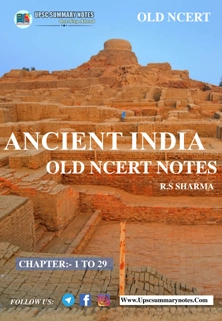
![1 Ancient History Old Ncert R.S Sharma Notes 2024 [PDF]](https://upscsummarynotes.com/wp-content/uploads/2023/06/1-1.webp)


















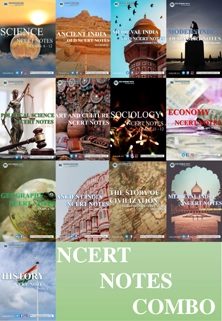
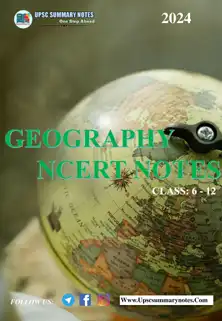
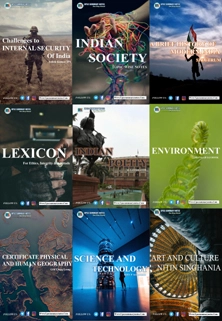


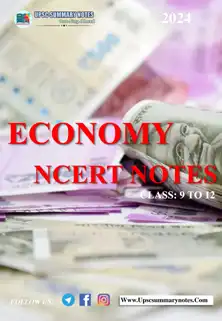
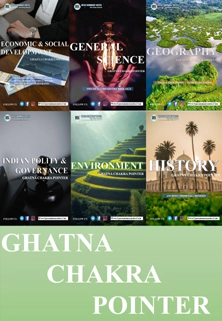
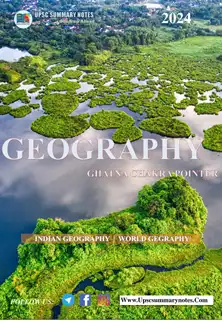
Neel Kamal Jhalani –
These are just so so perfect notes. The notes also helps in better understanding. HIGHLY SATISFIED.
Anusha T –
Yes I like it, must buy it
Priyanka Ghorui –
It is really good.
Akash Varshney –
Good and efficient content.
Sahil Gupta –
Everything is in so much detail and depth of understanding rather than reading the book for ancient, this one is the best to read and understand the concept all under one. Great Notes
Manajit Basumatary –
I liked the colourful diagrams. NCERT notes are to the point. Must buy for students who prefer self-study preparation.
Saikat Debbarma –
Only one word for this Notes…… EXCELLENT